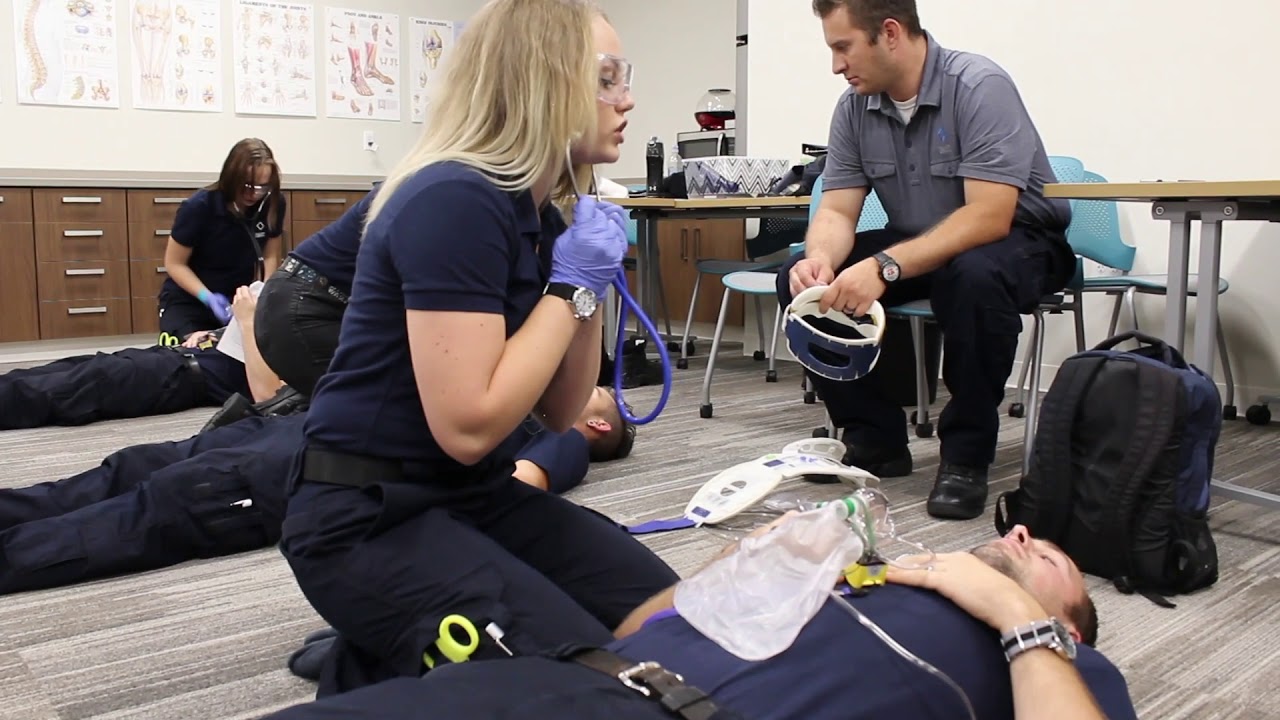What to Look for in an EMT Program
1. Accreditation Matters
Before enrolling in any EMT program, verify that it is accredited by a recognized organization, such as the Commission on Accreditation of Allied Health Education Programs (CAAHEP) or the National Registry of Emergency Medical Technicians (NREMT). Accreditation ensures that the program meets industry standards and that your certification will be recognized by employers and licensing boards. Non-accredited programs may not qualify you for certification exams, wasting your time and money.
2. Program Duration and Structure
EMT training programs vary in length, ranging from a few weeks to over two years. The duration largely depends on the level of certification:
- Basic EMT (EMT-B): Typically takes 6 months and focuses on fundamental emergency care skills.
- Advanced EMT (EMT-A): Takes around 12 months and includes additional training in IV therapy and medication administration.
- Paramedic (EMT-P): Requires 1 to 2 years of education and provides extensive training in advanced life support (ALS).
Some programs offer accelerated courses, which can be completed in 8 to 10 weeks but require a full-time commitment. If you have a busy schedule, a part-time or evening program might be a better fit.
3. Cost and Financial Assistance
The cost of EMT programs can vary significantly based on the institution, location, and level of certification. Here’s a general breakdown:
| Program Type | Average Duration | Typical Cost | Key Features |
| Basic EMT | 6 months | $1,000–$3,000 | Covers fundamental emergency care skills |
| Advanced EMT | 1 year | $3,000–$7,000 | Includes IV therapy and medication administration |
| Paramedic | 1-2 years | $6,000–$15,000 | Provides advanced life support training |
| Online EMT | Varies | $500–$4,000 | Flexible learning with in-person clinical requirements |
If cost is a concern, consider looking into:
- Community Colleges & Technical Schools – These institutions often provide lower tuition than private training centers.
- Scholarships & Grants – Some states offer financial aid for EMT training, particularly for those working in underserved areas.
- Employer-Sponsored Training – Some ambulance services and fire departments will pay for EMT training in exchange for a work commitment.
- Payment Plans – Many schools offer installment payment plans to make tuition more manageable.
4. Online vs. In-Person EMT Training
With the rise of online education, many students wonder if they can complete an EMT program entirely online. While some coursework can be done online, hands-on training is still required. Here are the pros and cons of each format:
Online EMT Programs
Pros:
- Flexible schedule
- Lower tuition costs
- Ideal for working professionals
Cons:
- Requires in-person clinical training
- Limited hands-on experience before clinical rotations
- Some states may not accept online training
In-Person EMT Programs
Pros:
- More hands-on training
- Direct interaction with instructors
- Better networking opportunities
Cons:
- Less flexible schedule
- Often more expensive than online programs
If you need flexibility, a hybrid EMT program (a mix of online coursework and in-person clinical training) may be the best option.
Steps to Become an EMT
1. Meet Basic Prerequisites
Before enrolling in an EMT program, you must meet certain requirements, including:
- A high school diploma or GED
- A minimum age requirement (usually 18 years old)
- A clean background check (some states require fingerprinting)
- Up-to-date vaccination records (including hepatitis B, tetanus, and COVID-19 in some cases)
2. Choose the Right EMT Program
Consider factors such as location, cost, accreditation, and program format (in-person vs. online). Research multiple schools to find one that best suits your needs.
3. Complete EMT Training
Your training will include classroom instruction, skills labs, and clinical experience in real-world settings such as hospitals and ambulances. You’ll learn:
- Patient assessment techniques
- CPR and basic life support (BLS)
- Trauma care and wound management
- Administering oxygen and medications
- Handling medical emergencies like strokes and heart attacks
4. Pass the National Certification Exam
After completing training, you must pass the National Registry of Emergency Medical Technicians (NREMT) exam. This test includes:
- A cognitive exam (written test covering medical knowledge)
- A psychomotor exam (practical skills test)
Some states may have additional certification requirements, so be sure to check your local regulations.
5. Obtain State Licensure
Once you pass the NREMT exam, you must apply for state licensure. Requirements vary by state but may include:
- Submitting an application and exam results
- Paying licensing fees
- Completing a background check
6. Start Your Career as an EMT
After getting licensed, you can apply for EMT jobs at:
- Ambulance services
- Fire departments
- Hospitals and emergency rooms
- Law enforcement agencies
Many EMTs use their experience as a stepping stone to becoming paramedics, firefighters, nurses, or even doctors.
Frequently Asked Questions
How long does it take to become an EMT?
Basic EMT training typically takes 6 months, but advanced programs can take 1-2 years.
Can I complete an EMT program online?
You can complete some coursework online, but hands-on training is required. Many schools offer hybrid programs.
What is the cost of an EMT program?
Costs range from $1,000 for basic training to $15,000 for paramedic programs. Community colleges tend to be more affordable.
Do EMTs need to renew their certification?
Yes. EMTs must recertify every 2-3 years through continuing education and exams.
Is financial aid available for EMT programs?
Yes, financial aid options include scholarships, grants, employer-sponsored programs, and payment plans.
Reliable Sources for EMT Training
- National Registry of Emergency Medical Technicians (NREMT) – https://www.nremt.org
- Commission on Accreditation of Allied Health Education Programs (CAAHEP) – https://www.caahep.org
- American Red Cross EMT Training – https://www.redcross.org

